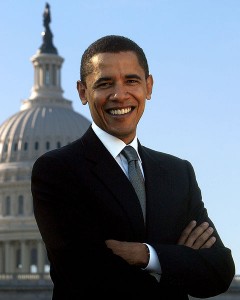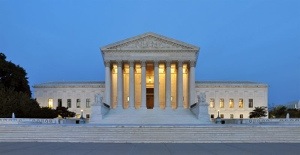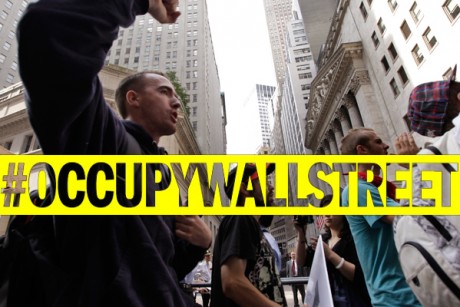WRITTEN BY RIK SAULT, GUEST CONTRIBUTOR
 What is a shutdown?
What is a shutdown?
The federal budget generally sets the federal government’s funding levels for the fiscal year. Congress is required by law to pass such a budget annually. Both the Senate and the House must approve, or “pass,” the federal budget before they can send it to President of the United States (“POTUS”), who ultimately signs it into law. Federal government shutdowns occur when POTUS and Congress are unable to agree about budget allocations before the end of the existing budget cycle. When there is not an approved budget in place, the federal government goes into shutdown.
When is the last time the federal government had a shutdown?
17 years ago, during the Clinton administration, the Republicans fought with Clinton about the timetable for the budget. After 21 days, Congress and Clinton agreed to a compromise.
So, has there been a shutdown?
At 12:01 A.M., on Tuesday, October 1st, the federal government began a partial shutdown, with all but essential services curtailed or closed entirely (it says so right on USA.gov).
Who is out of work? What isn’t open?
Between 800,000 and 1 million federal employees have been temporarily furloughed. This includes many civilian employees of the military and most of the EPA’s 17,000 employees.
National museums, parks, and monuments have been closed (including the Statue of Liberty!). The CDC has ceased most of its operations, and federal medical research has been curtailed. The panda cam at the National Zoo, the NASA TV channel, and the NASA website have all been taken offline. (NOTE: For a list of available Federal government services, you can call 1-800-FED-INFO).
Additionally, twenty-eight poison ivy-eating goats were removed from a national park in New Jersey after their owner became worried that the shutdown would close the park where the goats had been dutifully eating the ivy. Truly unfortunate.
Which Federal employees are still working?
All essential employees, including federal air traffic controllers workers, uniformed service members providing medical care, airport security personnel, border patrol agents, prison guards, postal carriers, and disaster assistance workers. Interestingly enough, members of Congress are deemed “essential” and will continue to be paid (however, at least some of their state offices have shut down).
What happened?
This shutdown follows three years of increasingly divided government and growing political partisanship. One of the major points of contention is Obamacare (also known as the Affordable Care Act), which Republicans have voted more than 40 times to repeal or delay. In the midst of this contention, Congress has been unable to pass a budget in a normal way. To keep the government operating last March, it passed a temporary spending measure…but it expired at midnight on Monday.
Vocal conservatives associated with the Tea Party movement used this looming budget deadline as leverage to press for concessions related to Obamacare. Much to the chagrin of some of their Republican contemporaries, the Tea Party folks have tied their continued opposition to Obamacare to their pledge to rein in government spending. Therefore, Republicans in the House sought to “tack” measures defunding Obamacare onto the proposed budget. The House effectively said that if the Democrat-controlled Senate and White House are not willing to delay implementation of Obamacare and/or cut its funding, then it would not allow the budget to go through.
On Monday, the Senate rejected measures passed by the Republican-controlled House that would have delayed key portions of Obamacare (which has been touted by some as the most ambitious US social program in 50 years) while extending government funding for a few weeks (they took down the tack-on in a game of chicken).
Thus, no budget was approved. The Obama administration unveiled the online insurance marketplaces, and people can now sign up for insurance plans under Obamacare. But, because there was no budget, the government shut down.
Who should we blame?
Republicans and Democrats traded blame for the shutdown. President Obama blamed the government shutdown on a “faction” of House Republicans. “They’ve shut down the government over an ideological crusade to deny affordable health insurance to millions of Americans,” the President said. “In other words they demanded ransom just for doing their job.” In his view the shutdown was “completely preventable,” and “should not have happened.”
Senate Republican Leader Mitch McConnell, however, accused Democrats of dragging their feet for days, rejecting bills passed by the House that would have kept the government funded for at least little while longer. At this point, many Republicans maintain that they are simply asking Democrats to come to the table, to “negotiate” on measures to defund or delay Obamacare (even though Obamacare has long since been signed into law). The House requested that a bipartisan conference of lawmakers convene to hash out the crisis, but democratic Senate Majority Leader Harry Reid immediately rejected that proposal this morning. According to the White House, this proposal “shows the utter lack of seriousness that we’re seeing from Republicans.”
In spite of the fierce finger-pointing, some lawmakers are deeply embarrassed.
Some have said they plan to donate their salaries to charity, or even forego their pay. “This is a black eye on our government at all levels,” said Republican Representative Michael Grimm of New York. “I think it’s a low point for us.”
Interestingly, a Reuters/Ipsos poll taken before the shutdown showed that 24% of Americans would blame Republicans, while 19 % would blame Obama or Democrats. Meanwhile, 46% percent said everyone would be to blame.
Can I expect a tax refund?
What I want to know is whether every taxpaying citizen gets a tax refund as a result of this shutdown? I pay substantial sums out of each of my paychecks so that I can enjoy the panda cam, as well as parks filled with ivy-eating goats. But now I’ve been denied a full-day of all that, and who knows how many more.









